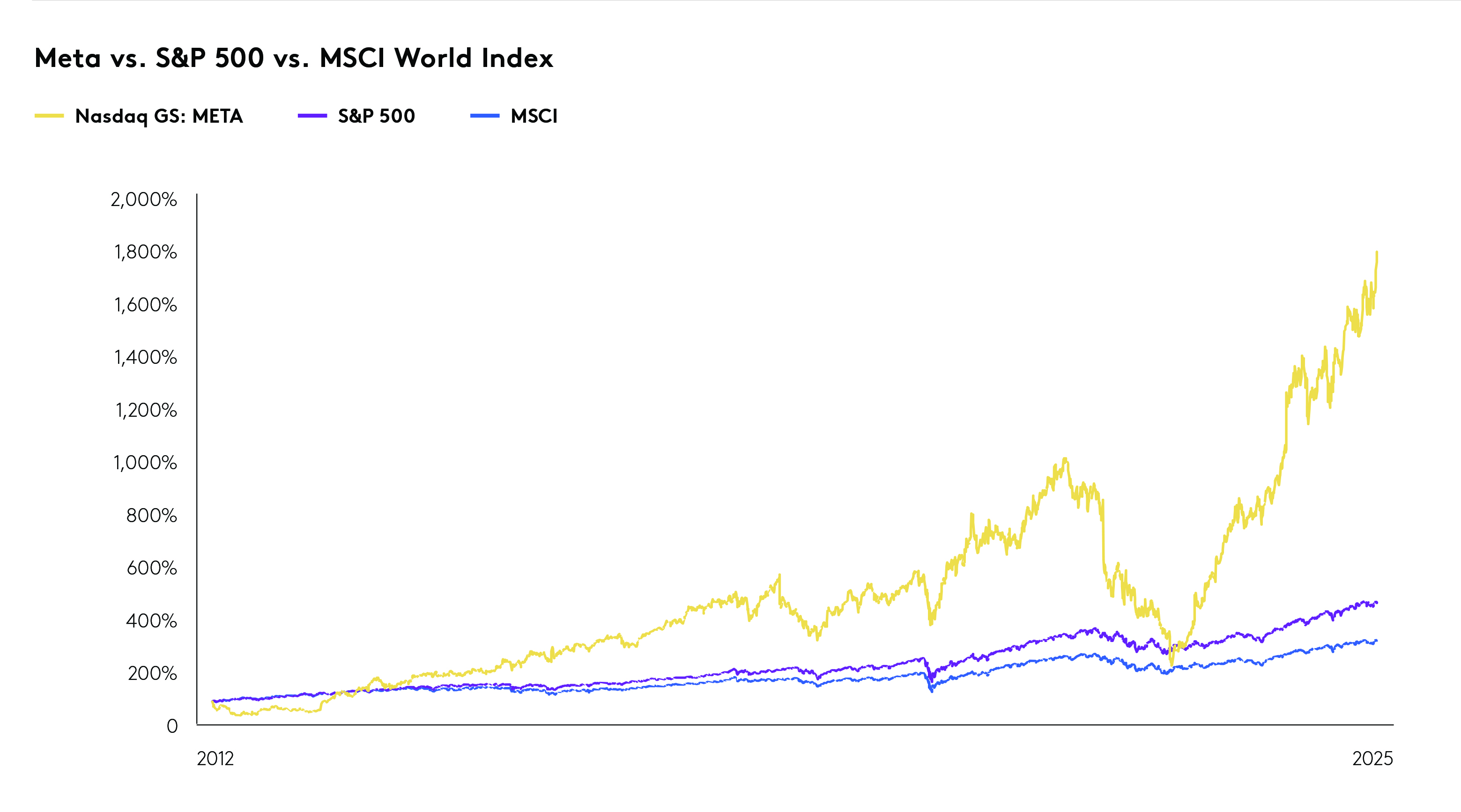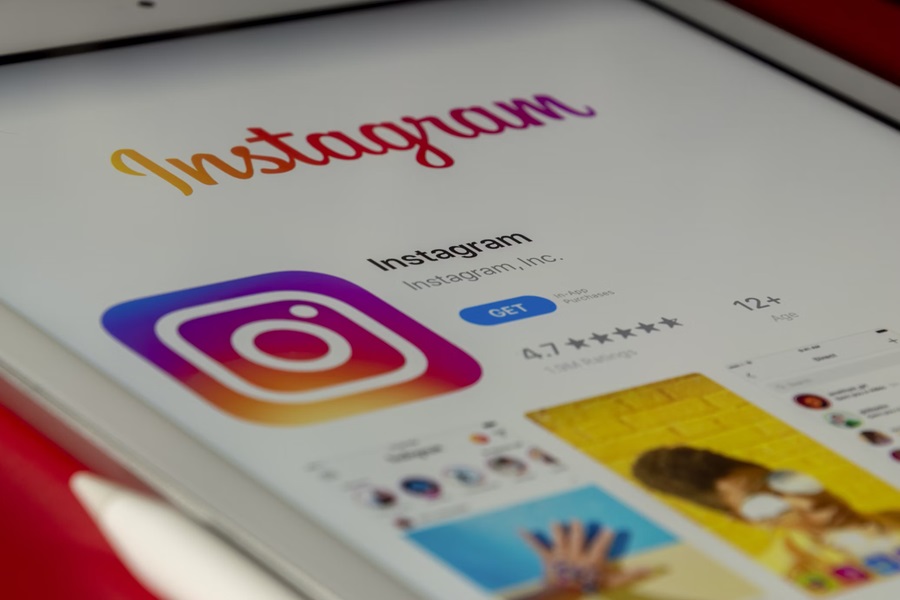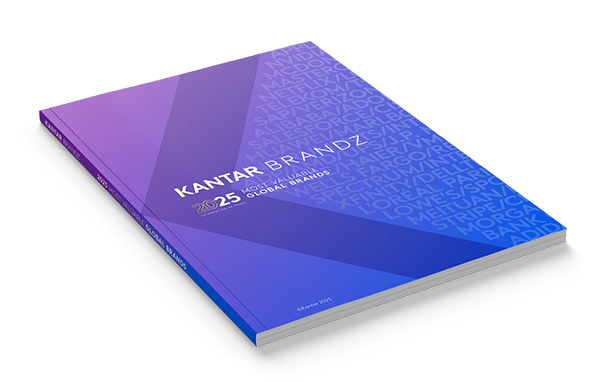Forget the endless hype about tech disruption and economic uncertainty. One thing remains constant: strong brands grow faster. The Kantar BrandZ Strong Brands Portfolio has consistently outperformed major market indices. This proves that brand equity isn’t just a feel-good marketing concept, it’s a financial weapon.
In times of crisis, the best brands don’t just survive, they thrive. During the 2008 financial meltdown and the COVID-19 pandemic, powerhouses like Amazon, Netflix and Microsoft didn’t flinch. They dominated. Why? Because a strong brand acts as a financial shield, protecting companies from market volatility while their weaker competitors scramble to survive. If you care about shareholder returns – and you should – brand equity is not optional; it’s essential.
Instagram: A masterclass in brand equity
Let’s track how this lesson has played out across the story of a single brand over the past decade.
Instagram launched in 2010 and sold to Facebook in 2012. By 2018, it had become a $14.5 billion brand. This didn’t happen by accident: Instagram grew because it understood its audience, built a strong proposition and scaled aggressively. But that was just the start. Fast forward to 202, and Instagram’s brand value has surged by 1479%, crushing the Global Top 100 growth of 144%.
Instagram’s evolution from 2018 to 2025 has played out like a masterclass in brand management. It perfectly illustrates the three pillars of Kantar’s Blueprint for Brand Growth: Predispose More People, Be More Present and Find New Space.

Predispose More People: the relentless pursuit of eyeballs
Brand value growth is one facet of Instagram’s incredible success story. Reach is another. By late 2022, Instagram’s user base had soared past 2 billion users. How did it achieve this? Ruthless adaptation.
Brand predisposition is all about shaping consumers’ perceptions before they even consider alternatives. Instagram achieved this by leaning into cultural moments and integrating shopping seamlessly. By the end of the COVID-19 pandemic, features like in-app checkout and AI-driven recommendations had turned Instagram into a bona fide hybrid of entertainment and ecommerce. By blurring the lines between content and commerce, Instagram ensured that users kept scrolling and spending.
The platform also leaned heavily into creator partnerships. This meant incentivising influencers with monetisation tools like subscriptions, badges and ad revenue sharing. By keeping creators happy, Instagram kept audiences engaged – a textbook move to strengthen brand equity.
Be More Present: ubiquity in the digital ecosystem
Availability isn’t just about being where users are – it’s about making access frictionless. In recent years, Instagram doubled down on its integration with Meta’s broader ecosystem, particularly WhatsApp and Messenger. Cross-app messaging became seamless, making Instagram an embedded part of users’ daily digital habits.
AI-powered search enhancements and location-based discovery further improved accessibility. Instagram positioned itself as a go-to discovery engine regardless of whether users were looking for fashion trends, local restaurants, niche creators... or all of the above.
Find New Space: the hits and misses
When TikTok threatened Instagram’s dominance in the youth market, Instagram responded with Reels, a shortform video format designed to claw back engagement from the Gen Z audience. It worked. By 2025, Reels had become a cornerstone of the platform, driving time spent and advertiser dollars.
Instagram’s relentless pursuit of engagement wasn’t without missteps. In 2022, it shifted to a more TikTok-like algorithm that prioritised AI-recommended content over users’ actual network. The backlash was immediate. Users – including high-profile influencers like the Kardashians – pushed back, forcing Instagram to dial down the changes. Lesson learned: evolution must align with core user expectations.

Putting it together
Instagram’s success ultimately comes down to classic brand strategy: play to your strengths, adapt to threats and don’t alienate your core users. Brand building isn’t a cost, it’s an investment with ridiculous returns. The stock price of Instagram’s parent company Meta testifies to this fact. Its enterprise value hit $1.6 trillion in 2025, a 2.5x increase since 2018.
The results are clear, and yet, too many companies still treat brand as a side project rather than the core of their business strategy. That’s a mistake. Strong brands like Apple, Nike and Amazon prove that brand strength isn’t just a marketing metric, it’s the foundation of long-term financial success.
So, if you aren’t investing in your brand, be prepared to pay the price while your competitors reap the rewards.
The 20th anniversary edition of Kantar BrandZ’s Most Valuable Global Brands rankings and report are now available at www.kantar.com/campaigns/brandz/global
For a quick read on a brand’s performance compared to competitors in a specific category, Kantar’s free interactive tool, BrandSnapshot powered by BrandZ, provides intelligence on 14,000 brands. Find out more here.
Related inspiration articles




